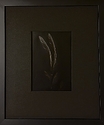bonk
Member
- Joined
- Mar 31, 2007
- Messages
- 214
- Format
- Med. Format Pan
I know this has been asked before but I can’t seem to find a satisfying answer for my particular situation.
I am about to print my first 4x5 negatives and some of them I would like to print on larger fiber based paper at 50,8x61cm (20x24“) and some using RC paper of the same size.
So far I have only printed on smaller RC paper. I don’t have any experience in printing on fiber paper and also never printed this large at all.
How do I dry those large sheets and how do I flatten those fiber sheets? Does it make a difference whether the surface of the paper is glossy or not?
I do own a small darkroom (about 16m2) so I could build or install stuff in there as long as it doesn’t break the bank.
I am about to print my first 4x5 negatives and some of them I would like to print on larger fiber based paper at 50,8x61cm (20x24“) and some using RC paper of the same size.
So far I have only printed on smaller RC paper. I don’t have any experience in printing on fiber paper and also never printed this large at all.
How do I dry those large sheets and how do I flatten those fiber sheets? Does it make a difference whether the surface of the paper is glossy or not?
I do own a small darkroom (about 16m2) so I could build or install stuff in there as long as it doesn’t break the bank.





